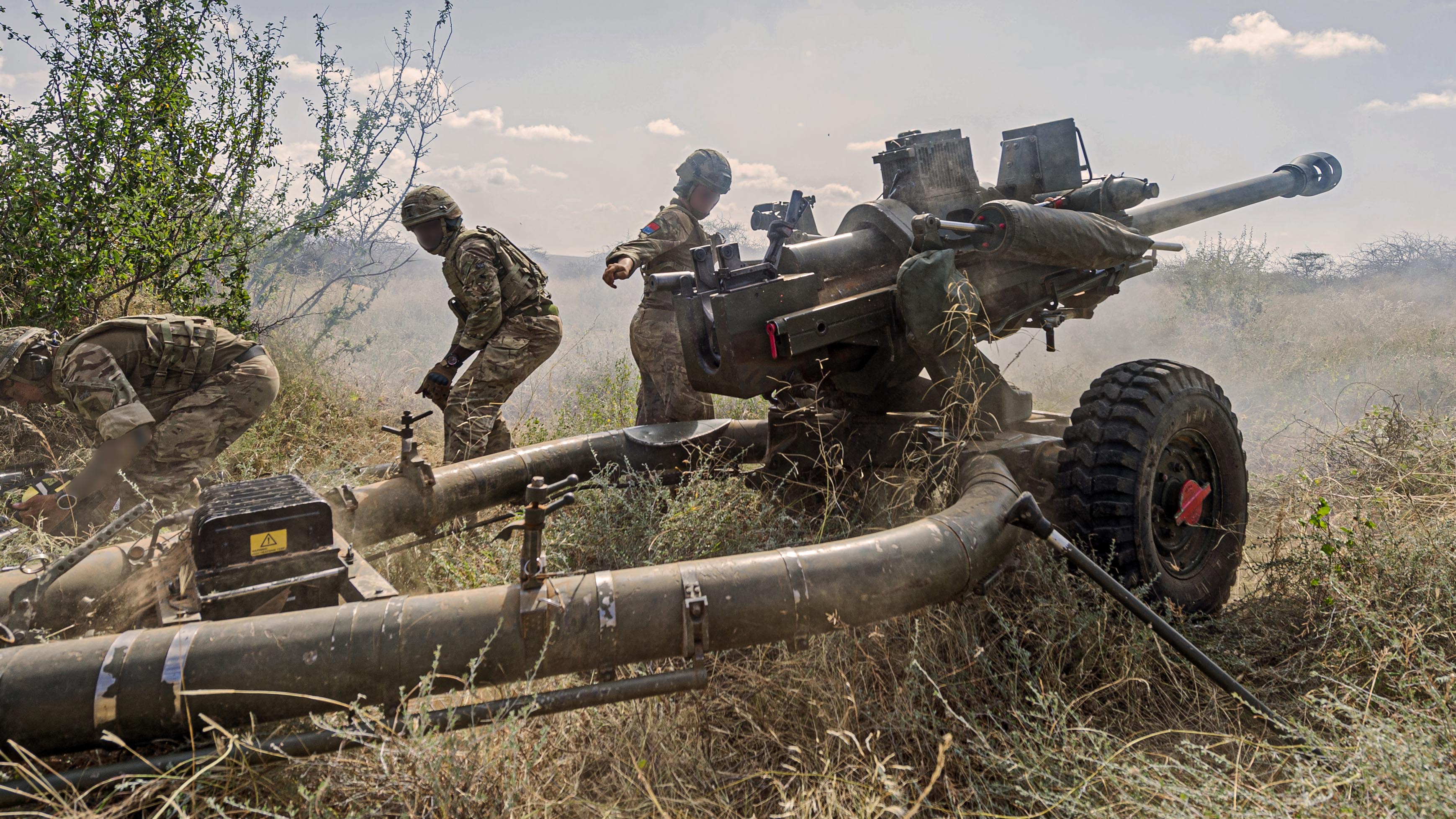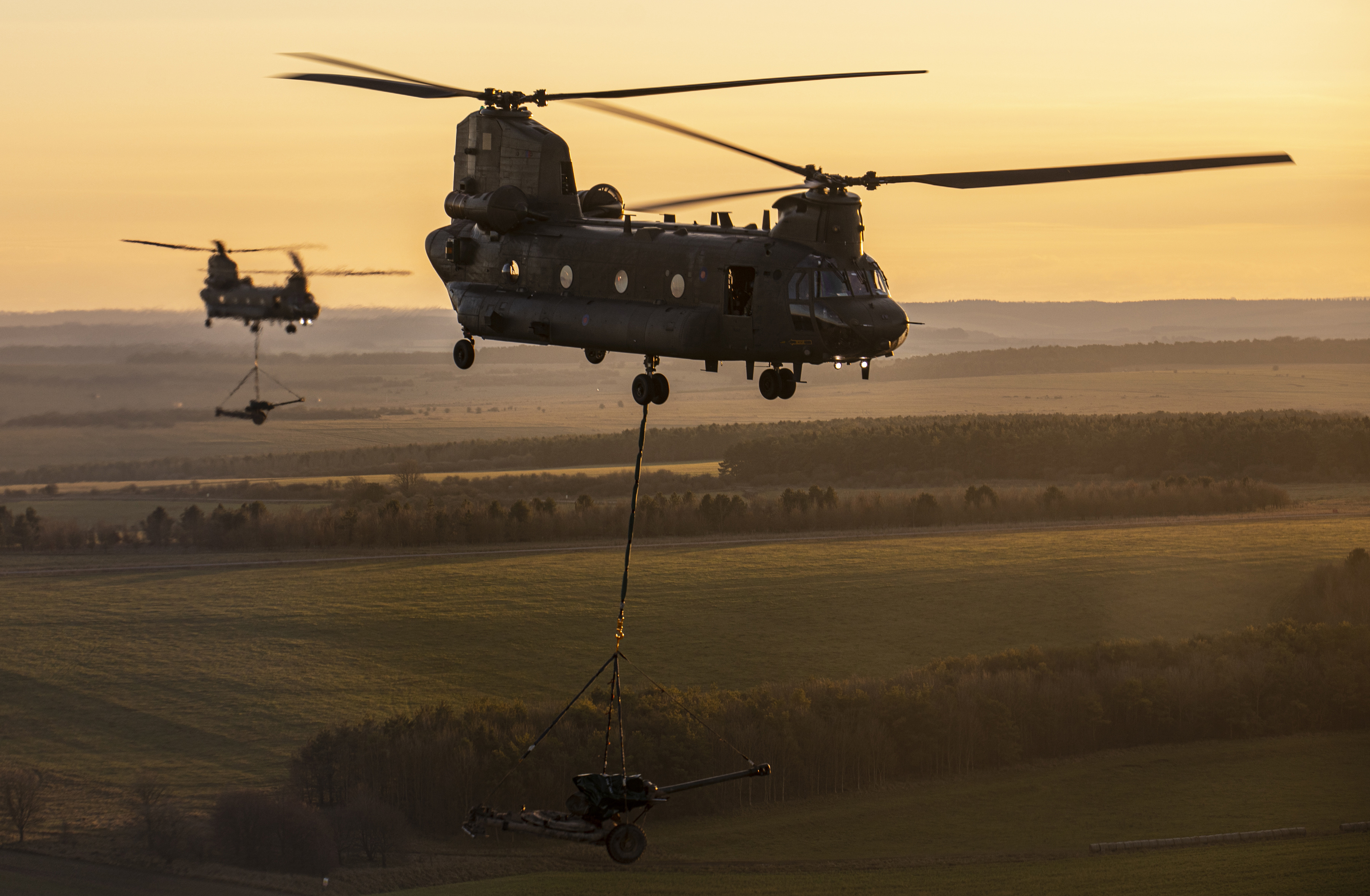The U.K. Ministry of Defense has revealed that it is looking at unmanned self-propelled guns, which could have autonomous capabilities, as potential replacements for the British Army’s current L118 105mm howitzer. An artist’s conception of one proposal for this future Lightweight Fires Platform, seen at the top of this story, shows a design with four wheels on separate, articulating legs.
Jon Hawkes, Head of Land Warfare at the Janes defense and security information company, today tweeted a slide from an apparent briefing provided by the U.K.’s Defense Science and Technology Laboratory, or Dstl, a branch of the U.K. Ministry of Defense that leverages scientific and technological advances for the benefit of the armed forces. Dstl is celebrating the 20th anniversary of its establishment today, as well.

The slide Hawkes shared shows a computer-generated concept for an unmanned self-propelled gun, mounted on a four-wheeled chassis. As already noted, each of the wheels is mounted on an articulating leg and there are no connecting axles, suggesting that this proposal would involve a hybrid-electric motor-in-hub arrangement, or perhaps some sort of mechanical linkage inside the leg that connects to a motor in the central body. Either way, the concept is at least fairly notional at this stage.
This general concept has been seen on other unmanned ground vehicle designs, such as the Multi-Mission Unmanned Ground Vehicle, or MULE, that was developed for the U.S. Army, initially as part of the abortive Future Combat Systems (FCS) program. This type of design is intended to provide a very high degree of mobility over all kinds of rough terrain.

The artist’s conception of the Lightweight Fires Platform (LFP) includes a gun and onboard ammunition stowage on top of the chassis, along with what appears to be an autoloader, shown in red, to actually load rounds into the weapon. The slide says that Dstl has been exploring weapons of various calibers, along with associated ammunition.
This particular concept is likely just one to have emerged from this three-year “pre-concept” study that aims to find a successor to the L118, a 105mm weapon that has to be towed into action or transported by helicopter. The L118 dates back to the late 1960s and is also used by the U.S. Army, in a modified form, as the M119 howitzer.
Most interestingly, perhaps, is the fact that Dstl is considering “unmanned, autonomous, and self-propelled concepts” for the future gun, as part of the Lightweight Fires Platform (LFP) program, an effort that seems not to have been widely known about until now.
There is little publicly available information about LFP, either, although a tweet from the 7th Parachute Regiment Royal Horse Artillery last October reveals that a senior engineer from Dstl visited that unit to discuss ammunition and the logistic support chain to help inform the program.
Moreover, LFP appears to be part of a broader initiative known as the Close Support Fires program. In the U.K. Ministry of Defense’s Defense Equipment Plan for 2019, Close Support Fires was described as an effort “which will deliver a step-change in artillery capability providing greater agility, range, and lethality in support of the warfighting division from 2026.”
The Dstl slide says that it is, though “investigating and evaluating multiple calibers and advanced projectile solutions,” looking to find a new light artillery piece that has extended range and improved accuracy and effects, as well as greater mobility and a reduced crew complement. The current L118 has a range of around 11 miles, although it is considered far less accurate once firing at targets beyond around 9 miles and it’s highly probable that any replacement would feature at least the option of precision-guided shells.

Clearly, an unmanned and potentially autonomous self-propelled gun, which would appear to be consistent with the accompanying concept artwork, would offer significant manpower savings. An autonomous system has the ability to operate completely independently of human control and a concept such as this would enable a relatively small number of personnel to provide significant fire support, as well as potentially distribute those assets better and make it easier to relocate as needed. The manpower issue is particularly significant for the British Army, which has been steadily shrinking in size for years now.
As for a desire for extended-range artillery, this is something that was brought up in the U.K.’s Defence in a competitive age white paper published last March. “Investment in longer-range artillery will mean the Army is able to deliver a more precise and lethal response and attack potential adversaries at greater depth, providing greater protection,” the document stated.
However, that same paper did not mention the LFP program but instead references the Mobile Fires Platform, for which the U.K. has already committed to spending over £800 million over the next decade. This is a future indirect-fire weapon system that is planned to supersede the AS90 self-propelled howitzer and will see the U.K. observing the U.S. Army’s mobile howitzer trials.
Meanwhile, the LFP concept emerges at a time in which there is considerable discussion in the United States, in particular, about the potential for unmanned artillery. Until now, however, most such concepts and demonstrators have involved rockets and missiles, rather than tube artillery.
In the past, The War Zone has examined the U.S. Army’s Autonomous Multi-Domain Launcher, or AML, a prototype unmanned derivative of the M142 High Mobility Artillery Rocket System, or HIMARS, that is also capable of a degree of autonomous operation. The AML is currently able to autonomously navigate a series of waypoints or operate in a “follow-the-leader” mode, in which it follows another vehicle, such as a manned HIMARS launcher. Targeting information and launch commands can be received remotely or via a control panel on the vehicle itself.

The U.S. Marine Corps, too, is embracing the potential offered by weapons-toting unmanned vehicles, with a variant of the Joint Light Tactical Vehicle armed with Naval Strike Missile anti-ship cruise missiles now under development under the Navy Marine Expeditionary Ship Interdiction System (NMESIS) program. In this case, it’s not entirely clear to what degree the system can work autonomously, or semi-autonomously.

Then there are other systems that have been described as “autonomous,” but which are in fact heavily automated, a category that includes Elbit’s Autonomous Truck Mounted howitzer System (ATMOS), although there have also been suggestions that this, too, could ultimately add some kind of actual autonomous or at least semi-autonomous capability.

Clearly, the British LFP initiative is looking at the smaller end of the scale in terms of vehicles and firepower, although it’s clear that the U.K. Ministry of Defense acknowledges the potential advantages of unmanned and potentially autonomous systems in this area. If anything, the kind of platform likely to be selected for an unmanned successor to the L118 will probably be closer in size to the U.S. Army’s Robotic Combat Vehicle-Lightunmanned ground vehicle prototypes, or RCV-L, the first prototypes of which were handed over late last year. The British Army will likely require a productionized LFP to be as least as transportable as the current L118, including underslung carriage by a medium helicopter.

While the United Kingdom’s latest defense review may not specifically mention plans to replace the L118, it is explicit about the importance of artificial intelligence and increased autonomy across the armed forces:
“Artificial Intelligence (AI) and AI-enabled autonomous capabilities will be essential to defense modernization: accelerating decision-making and operational tempo; extending the range, persistence, and mass of our capabilities; removing personnel from harm’s way by undertaking ‘dull, dirty and dangerous’ tasks; and delivering significant efficiency and affordability gains.”
All those aims would seem to be reflected in the LFP program, too, or are at least being considered for it. The project comes with a question mark, too, however, and that’s whether the United Kingdom can actually afford the potential costs and complexities of replacing manpower with more advanced unmanned autonomous platforms, at a time when the defense budget is already stretched.
Clearly, this effort is at an early stage, but this initial concept suggests that the successor to the British Army’s light gun could be much more advanced than the current L118.
Contact the author: thomas@thedrive.com
